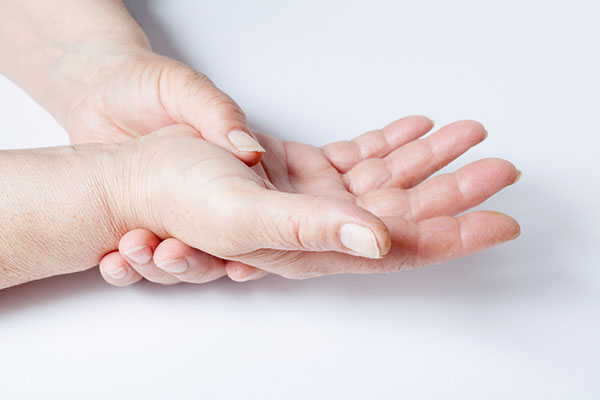
Scleroderma is a health condition that affects the hands and feet and can be affected in several ways. It is quite an uncommon condition, but worrying nevertheless. You may first notice that the skin on your hands starts to thicken, but scleroderma can also affect internal organs and blood vessels.
Scleroderma develops when the immune system starts attacking connective tissues that lie under the skin and around the body’s internal organs and blood vessels. The result is the thickening and scarring of the tissues in these areas.
Unfortunately, there is no cure for scleroderma, but it can be managed, enabling people to lead a relatively everyday life. Symptoms of scleroderma can be controlled and handled with proper care and medical treatment.
Types of Scleroderma
There are two types of scleroderma:
- Localised scleroderma, which affects the skin
- Systemic sclerosis, which may affect blood vessels, circulation and internal organs as well as the skin
Localised scleroderma is the most common and mildest form of this health condition. It most often affects children but can present itself at any age. Localised scleroderma only affects the skin, and most people notice one or more hard skin patches developing on their hands.
The internal organs remain unaffected by localised scleroderma, and the skin of the hands is affected depending on the type of local scleroderma you have. There are two types of local scleroderma: morphea and linear.
Systemic sclerosis can affect the skin and internal organs. This form of scleroderma mainly affects women and often develops between the age of 30 and 50. There are two types of systemic sclerosis: limited cutaneous systemic sclerosis and diffuse systemic sclerosis.
How do you treat scleroderma hands?
Many people with scleroderma of the hands can also experience Raynaud’s phenomenon. This is a health condition where poor blood supply to the fingers causes issues because the blood vessels have become narrowed.
Because the fingers can become numb and white in cold weather, it can help keep your hands warm by wearing mittens outdoors during winter. Stopping smoking can also help improve blood circulation, and you can be prescribed medication to reduce symptoms and dampen the activity of the immune system to slow the disease progression.
Common treatments can also include:
- Steroid injections to relieve joint issues in the hands
- Moisturising affected skin on the hands to help keep it supple and relieve itchiness
In some cases where large hard lumps develop under the skin that restrict movement, surgery may be needed to remove lumps, and tight muscles in the hands can be loosened.
How do I know if I have scleroderma?
You may suspect you have scleroderma if you experience any of the common symptoms of the condition. Symptoms can vary from person to person depending on the type of scleroderma you have.
You may have localised scleroderma if you notice patches of thick, hard skin developing on the hands. Some people can feel fatigued for no reason and experience symptoms of the Reynolds phenomenon in the fingers.
The only way to know for sure if you have scleroderma is to get a proper diagnosis. Getting a diagnosis will confirm or rule out scleroderma and allow you to discover which type you have if you have a positive diagnosis.
How quickly does scleroderma progress?
Scleroderma can come on gradually and slowly affect the skin on your hands and fingers. Sclerodactyly, which is thick and tight skin on the fingers resulting from deposits of excess collagen within skin layers, can gradually worsen over time.
However, diffuse cutaneous scleroderma comes on suddenly, usually starting with the skin thickening on your fingers. This type of scleroderma is more severe and can damage your internal organs, so you mustn’t ignore your symptoms and get a proper diagnosis as early as possible to help determine the type of scleroderma you have and get the best treatment for it.
What virus causes scleroderma?
There isn’t a single virus that is known to cause scleroderma. Usually, the body’s immune system will fight off any viruses, germs and infections that enter the body. However, it is thought that scleroderma develops when the immune system becomes overactive and doesn’t calm down after fighting off a disease or virus.
The cells in the body’s connective tissues produce too much collagen, leading to the thickening and scarring of the tissues of the hands and fingers.
What can scleroderma be mistaken for?
Because scleroderma is an autoimmune disease, it shares many of the same symptoms and characteristics of other autoimmune disorders, such as lupus. The most effective way to rule out any other possible causes for your symptoms and get a precise diagnosis for scleroderma is by consulting a specialist rheumatologist such as Dr Bhadauria.
What are the stages of scleroderma?
Scleroderma goes through a development stage that progresses over time. The stages are:
- Immune System Malfunction: Something triggers an immune response to develop auto-antibodies. This could be a virus or bacterial infection, or environmental trigger.
- Circulating Pathogenic Factors: The immune system over-generates destructive auto-antibodies that attack the body’s soft tissues.
- Microvascular Endothelial Damage: Auto-antibodies will directly or indirectly cause damage to the endothelial layers of cell microcapillaries.
- Fibrosis: Repeated tissue damage triggers an overproduction of collagen that starts the fibrosis process.
- Organ Damage: Fibrosis starts to affect the health of the skin and internal organs.
Article by Dr. Naveen Bhadauria



